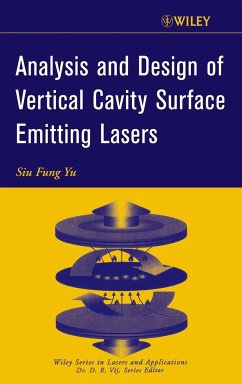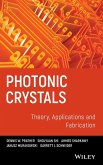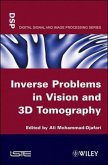Vertical Cavity Surface Emitting Lasers (VCSELs) are a type of semiconductor laser. The optical output of the VCSEL is emitted vertically from the surface as opposed to conventional edge-emitting semiconductor lasers. This verttical assembly offerers several advantagesin terms of output and design. At the moment the literature on this growing group of lasers is scattered over numerous publications. An expert on the subject, Dr. Yu has assimilated this large body of knowledge into a single reference, providing a substantial resource for researchers, both in academia and in the many organizations that manufacture and utilize VDSEL technology.
A practical, hands-on guidebook for the efficient modeling of VCSELs
Vertical Cavity Surface Emitting Lasers (VCSELs) are a unique type of semiconductor laser whose optical output is vertically emitted from the surface as opposed to conventional edge-emitting semiconductor lasers. Complex in design and expensive to produce, VCSELs nevertheless represent an already widely used laser technology that promises to have even more significant applications in the future. Although the research has accelerated, there have been relatively few books written on this important topic.
Analysis and Design of Vertical Cavity Surface Emitting Lasers seeks to encapsulate this growing body of knowledge into a single, comprehensive reference that will be of equal value for both professionals and academics in the field. The author, a recognized expert in the field of VCSELs, attempts to clarify often conflicting assumptions in order to help readers achieve the simplest and most efficient VCSEL models for any given problem.
Highlights of the text include:
_ A clear and comprehensive theoretical treatment of VCSELs
_ Detailed derivations for understanding the operational principles of VCSELs
_ Mathematical models for the investigation of electrical, optical, and thermal properties of VCSELs
_ Case studies on the mathematical modeling of VCSELs and the implementation of simulation programs
A practical, hands-on guidebook for the efficient modeling of VCSELs
Vertical Cavity Surface Emitting Lasers (VCSELs) are a unique type of semiconductor laser whose optical output is vertically emitted from the surface as opposed to conventional edge-emitting semiconductor lasers. Complex in design and expensive to produce, VCSELs nevertheless represent an already widely used laser technology that promises to have even more significant applications in the future. Although the research has accelerated, there have been relatively few books written on this important topic.
Analysis and Design of Vertical Cavity Surface Emitting Lasers seeks to encapsulate this growing body of knowledge into a single, comprehensive reference that will be of equal value for both professionals and academics in the field. The author, a recognized expert in the field of VCSELs, attempts to clarify often conflicting assumptions in order to help readers achieve the simplest and most efficient VCSEL models for any given problem.
Highlights of the text include:
_ A clear and comprehensive theoretical treatment of VCSELs
_ Detailed derivations for understanding the operational principles of VCSELs
_ Mathematical models for the investigation of electrical, optical, and thermal properties of VCSELs
_ Case studies on the mathematical modeling of VCSELs and the implementation of simulation programs
"...very nicely organized...design engineers of VCSELs will find this book the most useful. However, it also provides valuable information to CAD tool designers..." ( Optics & Photonics News , June 2005)
"...the author's assessment of the opportunities gives a strong incentive to develop such interest" ( Robotica , Vol. 22, 2004)
"...the author's assessment of the opportunities gives a strong incentive to develop such interest" ( Robotica , Vol. 22, 2004)








